Most Americans, if they ever tried seaweed at all, probably gave up on it after the first try because it is either very tough (kelp) or bland (nori).
However, well-prepared seaweed can be very tasty as well as extremely nutritious.
Korean Seasoned Seaweed
Koreans have developed a wide menu of tasty seaweed snacks. The basic strategy is to soak seaweed in oil, season it, and bake it briefly. The oil and seasonings make the seaweed taste much better.
The only trouble is that, like most food products sold in this country, commercial varieties tend to use low-quality oils. On our supplement recommendations page, we mistakenly linked to some Korean seasoned seaweed products that used unhealthy oils – canola oil or corn oil. (We’ve since corrected that; the current versions use olive oil and sesame oil.) Commercial varieties are also unreasonably expensive (in our view).
But seasoned seaweed is very easy to make at home. Today we’ll show you how.
Ingredients
First, get some nori – the classic Japanese sushi seaweed. In Korea, seasoned seaweed is made from unroasted seaweed, but we used roasted nori and it worked just fine. Here’s what we used:
The sheets are about 8” by 8”. You’ll also need:
- A healthy, low-omega-6 oil. We used olive oil on some sheets and coconut oil on others. Next time, we’ll try beef tallow and clarified butter.
- Seasonings. We used sesame oil and sea salt.
Here was our work area:
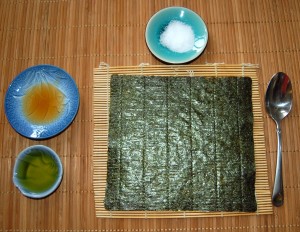
Spread the healthy oil on the seaweed. Each sheet will require about 1/2 to 1 teaspoon of oil (dried seaweed can really soak up oil). We favor using the back of a spoon to spread the oil.
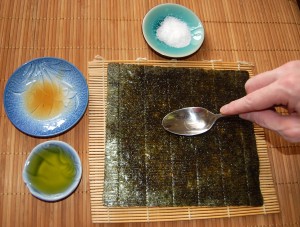
Sprinkle the salt (and any other seasonings) on the seaweed:

Place a new sheet on top of the previous one and repeat the application of oil and seasoning. It will pick up some oil and salt from the sheet underneath. In this photo, we’re applying coconut oil:
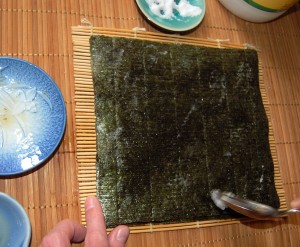
When you’ve finished your whole stack of sheets, place a few sheets on a baking sheet and bake at 350 degrees Fahrenheit (175 Celsius) for 2 minutes:
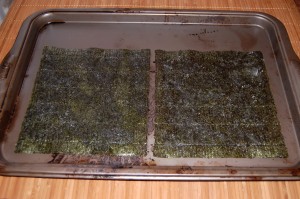
We baked each sheet individually, but it might be possible to bake a whole stack at once — we’ll try that next time.
The baked sheets may be easily folded and torn into more convenient sizes:
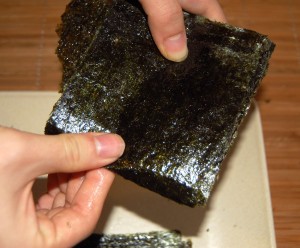
Here’s a finished stack:
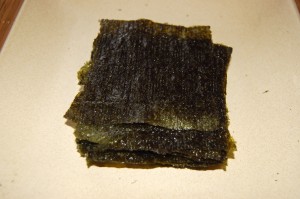
Voila! Just like grandma in Korea makes it. Eat the seaweed alone or with rice.









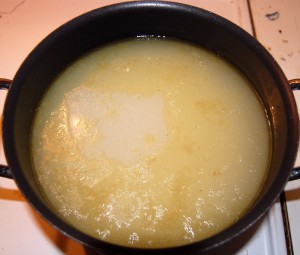
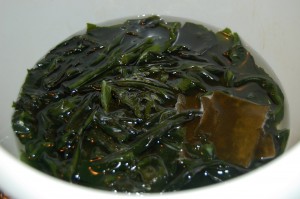
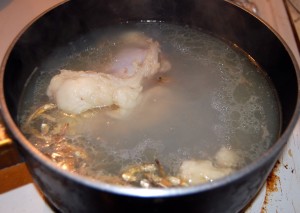
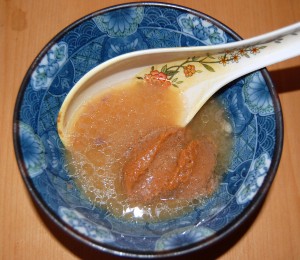
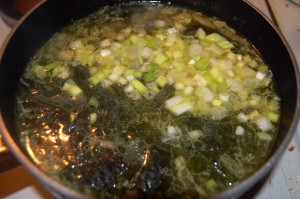



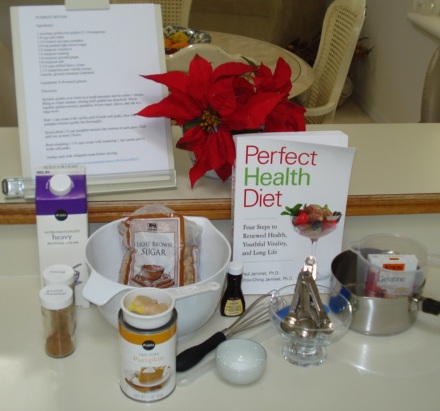
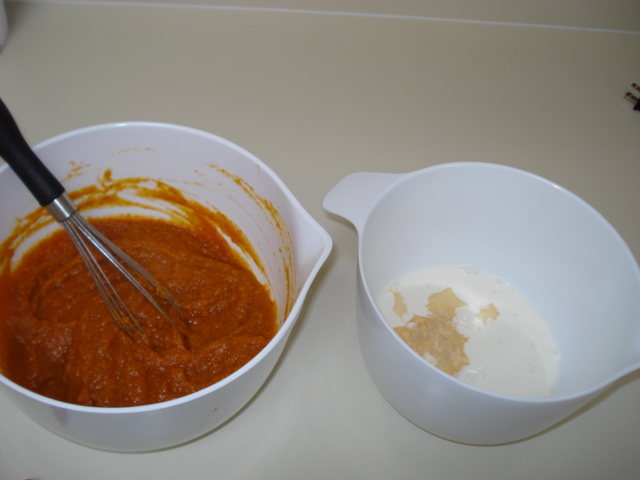
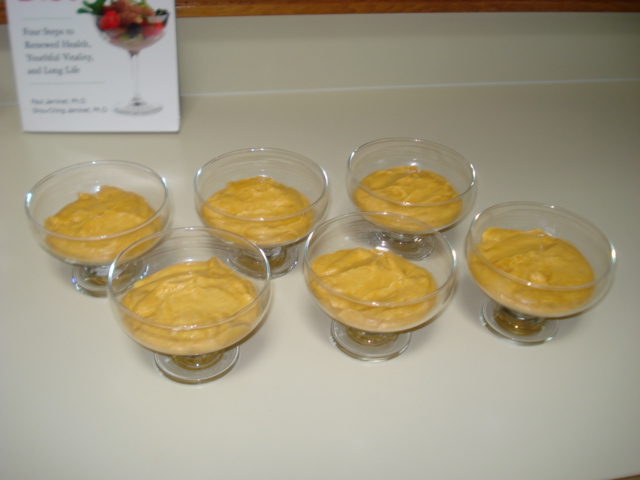
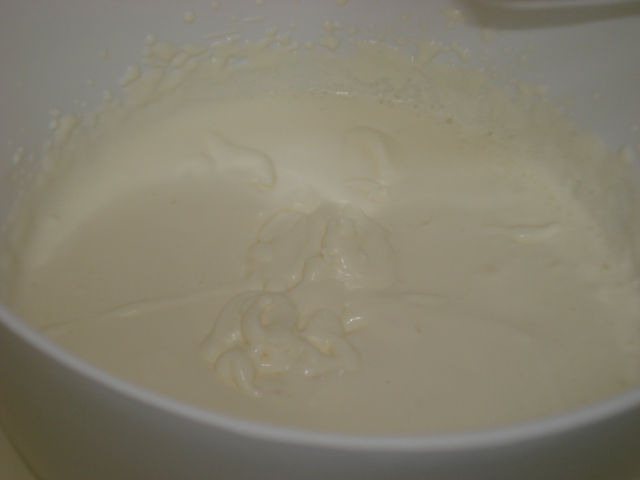
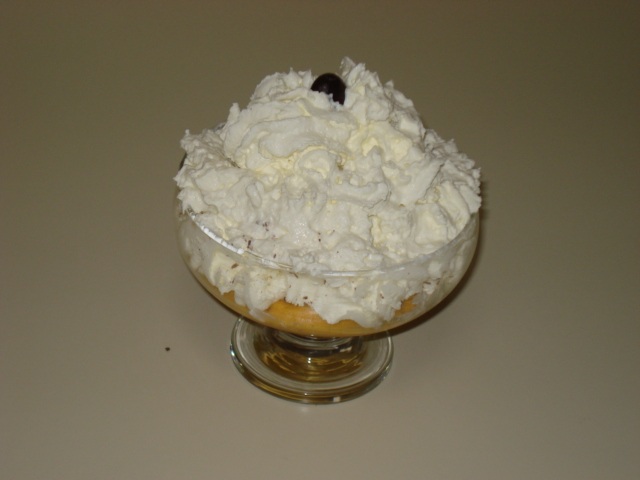




Recent Comments